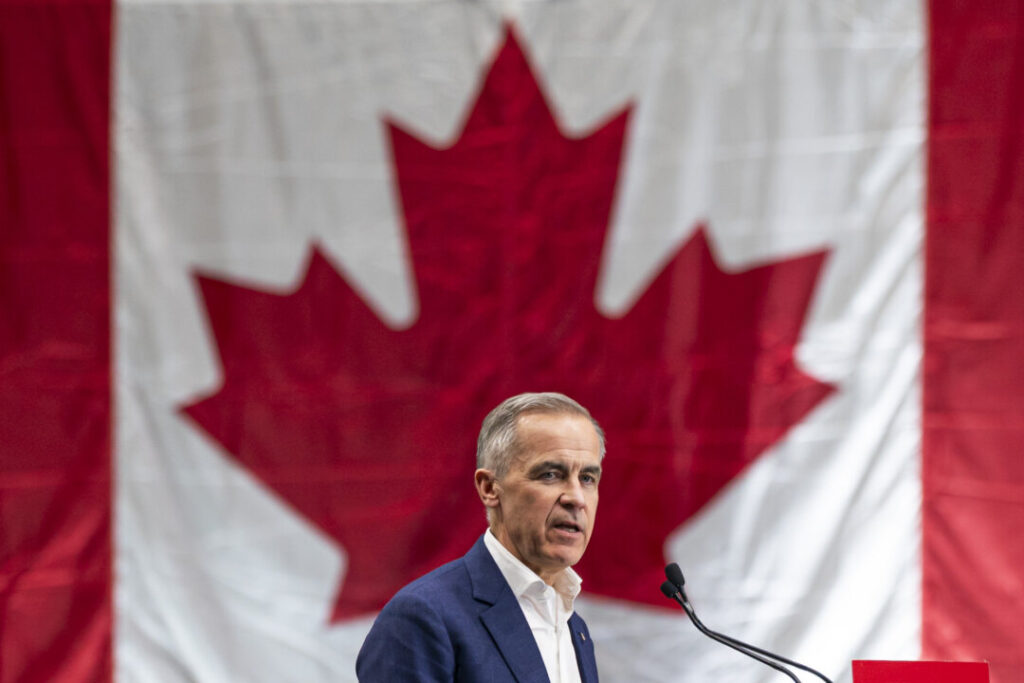The win secures a fourth consecutive term in government for the Liberals.
This article will be updated throughout the evening.
The Liberals are projected to form Canada’s next government following the April 28 election, according to The Canadian Press decision desk. It is not yet clear whether it will be a minority or majority government.
The win marks a remarkable feat for former central banker Mark Carney, who turned the Liberals’ fortunes around after winning the party’s leadership race on March 9 to replace Justin Trudeau, and was sworn in as prime minister on March 14.
Throughout 2024, Pierre Poilievre’s Conservatives led the polls with double-digit advantage over the Liberals, as support for Trudeau’s Liberals declined rapidly. However, the polls shifted following U.S. tariffs on Canada imposed by President Donald Trump and his comments suggesting Canada should become part of the United States, and Carney’s takeover of the Liberal leadership.
Liberal support in the April 28 election was boosted by the collapse of the progressive NDP vote, with the Carney Liberals picking up much of that progressive support.
The win secures a fourth consecutive term in government for the Liberals, following Justin Trudeau’s 2015 victory over the Harper Conservatives,
The win secures a fourth consecutive term in government for the Liberals, following Justin Trudeau’s 2015 victory over the Harper Conservatives, winning a majority, followed by minority governments in 2019 and 2021.
Two-Way Race
The vote came after a month-long campaign that developed into a two-way race between Carney’s Liberals and Poilievre’s Conservatives.
Also on the ballot were Jagmeet Singh’s NDP, the Bloc Québécois led by Yves-François Blanchet, the Green Party co-led by Elizabeth May and Jonathan Pedneault, and the People’s Party of Canada led by former Tory Maxime Bernier.
An all-time high of 7.3 million Canadians voted in the advance polls conducted over the Easter weekend. This figure exceeds the previous high of 5.8 million ballots during the 2021 federal election, according to Elections Canada.
At dissolution, the Liberals held 153 seats in the House of Commons, the Conservatives 120, the Bloc Québécois 33, the NDP 24, and the Greens two. There were also three Independent MPs and a few vacant seats.
The House of Commons had 338 seats following the 2021 election, but with the new boundaries introduced in 2022, that number has increased to 343.
Election Amid Tariffs

Conservative Leader Pierre Poilievre (L) and Liberal Leader Mark Carney talk following the French-language federal leaders’ debate at Maison de Radio-Canada in Montreal on April 16, 2025. Christopher Katsarov/Pool/AFP via Getty Images
The election came at a time when U.S. tariffs and policies affecting Canada loomed large, impacting election messaging and voter intentions.
Trump has made announcements regarding tariffs on Canadian goods, only to suspend and then re-announce them multiple times in recent months. Currently, the United States is imposing 25 percent tariffs on Canadian products not included in the North American free trade agreement, a 10 percent tariff on energy and potash, a 25 percent tariff on steel and aluminum, and a 25 percent tariff on auto parts. Canada has retaliated with its own tariffs on some U.S. goods.
Trump has also made comments that Canada should be a part of the United States. Trump took to social media on Canada’s election day to again insist the country would be better off as part of the United States.
Carney focused his election campaign on the response to the Trump presidency, saying the current situation presents the “greatest crisis of our lifetime.”
Poilievre also said during the campaign that Canada’s sovereignty is not up for negotiation, but focused his campaign mainly on change, saying the country needed a new government after nearly 10 years of Liberals being in power.



